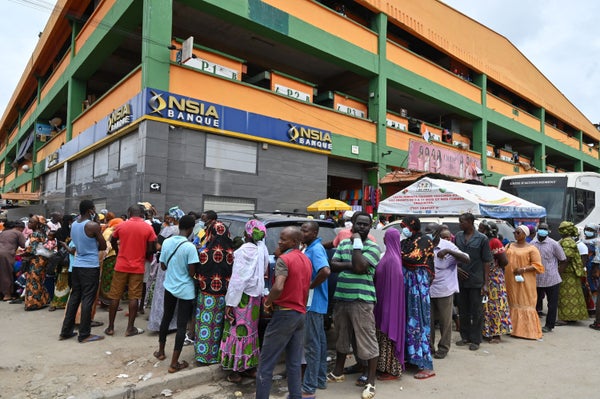Earlier the World Health Organization set a goal of having at least 10 percent of every country‘s population vaccinated against COVID-19 by the end of this month. It aimed to then raise that figure to 40 percent by the end of the year and to 70 percent by the middle of 2022.
Sadly, these targets have little chance of being met. Of the more than 5.8 billion doses of COVID vaccines that have been administered across the world by mid-September, the vast majority (about 80 percent) have gone to people living in high- and upper-middle-income countries. Fewer than 0.5 percent of doses have gone to people in low-income countries.
This enormous disparity exists because the bulk of currently available vaccine supplies have been bought up by a few countries rather than being shared equitably through global mechanisms such as COVAX, which develops and distributes COVID vaccines to countries that need them. (COVAX was organized by the WHO, the Coalition for Epidemic Preparedness Innovations, Gavi, the Vaccine Alliance, and UNICEF.)
On supporting science journalism
If you're enjoying this article, consider supporting our award-winning journalism by subscribing. By purchasing a subscription you are helping to ensure the future of impactful stories about the discoveries and ideas shaping our world today.
The richest countries in the world—those belonging to the G20—have failed to commit to equitable distribution of this global public health good, instead choosing to prioritize booster doses for those in their countries who are already fully vaccinated. Here, we must distinguish between a third shot of a two-dose vaccine for some and a booster shot for all. A third shot should be given to people who are immunocompromised—such as transplant recipients, who do not have enough antibodies to protect them.
In contrast, a booster shot is given to those who have already been fully vaccinated with the aim of increasing the immune response. The WHO has called for a temporary moratorium on booster shots until the end of the year. We believe more data are needed to determine which groups of people may need boosters and when. The data that we now have do not support booster shots in the general population.
Some evidence suggests that, with time after vaccination, antibody levels decline and produce lowered efficacy against infection. But there is as yet no credible evidence of the COVID vaccines showing significant declining protection against severe disease, hospitalization or death. Further, administering boosters widely too soon or too frequently may cause adverse effects, which could also have unintended consequences for vaccine acceptance.
We believe that more data are needed to enable policies on boosters to be based on science. Research must be conducted on whether using a vaccine that is different than the original shots one received might be better for a booster,whether fractional doses can be used, which groups of people—the elderly, for instance—need these shots and how often they should be administered. At present, it makes little sense to give boosters to people who may in fact not need them when billions of others around the world have not even received a first dose. These billions include health care workers on the front lines of this pandemic. Vaccinating all of these people as a priority would prevent untold numbers of deaths. The immediate global goal should be to provide high coverage of first and second doses to prioritized populations in every country, not just in a few.
If G20 countries shared their vaccines supplies with COVAX now, they could be immediately distributed to 92 low- and middle-income countries. While COVAX has negotiated agreements with several manufacturers, and a broad portfolio of vaccines is in the pipeline, companies are prioritizing sales to high-income countries. Export restrictions, shortages of raw materials and a lack of transparency in contracts among companies have meant that supplies to COVAX have been far below expectations. A recent update put the reduction at 25 percent of this year’s expected supplies. And even if the 1.4 billion doses still anticipated come through, they will be enough to cover 20 percent of low- and middle-income country populations.
Some 18 months into this pandemic—the greatest public health crisis in more than 100 years—as many as 10,000 people are still dying every day. They include unvaccinated people on the front lines of health care, the elderly and other vulnerable individuals in countries that have had little or no access to vaccines. Countries that are rich in resources can swiftly bring an end to this deadly inequity—if only they have the moral backbone to do so.
This is an opinion and analysis article, and the views expressed by the author or authors are not necessarily those of Scientific American.
